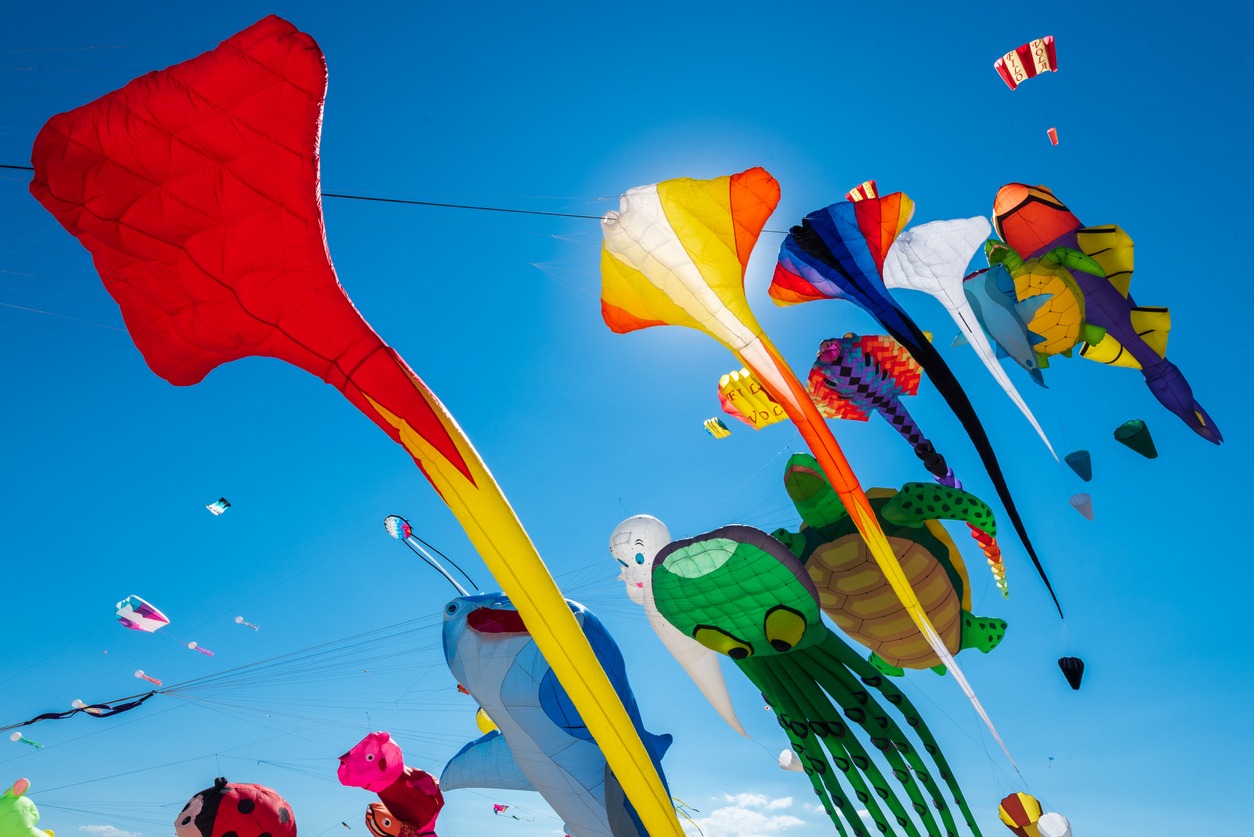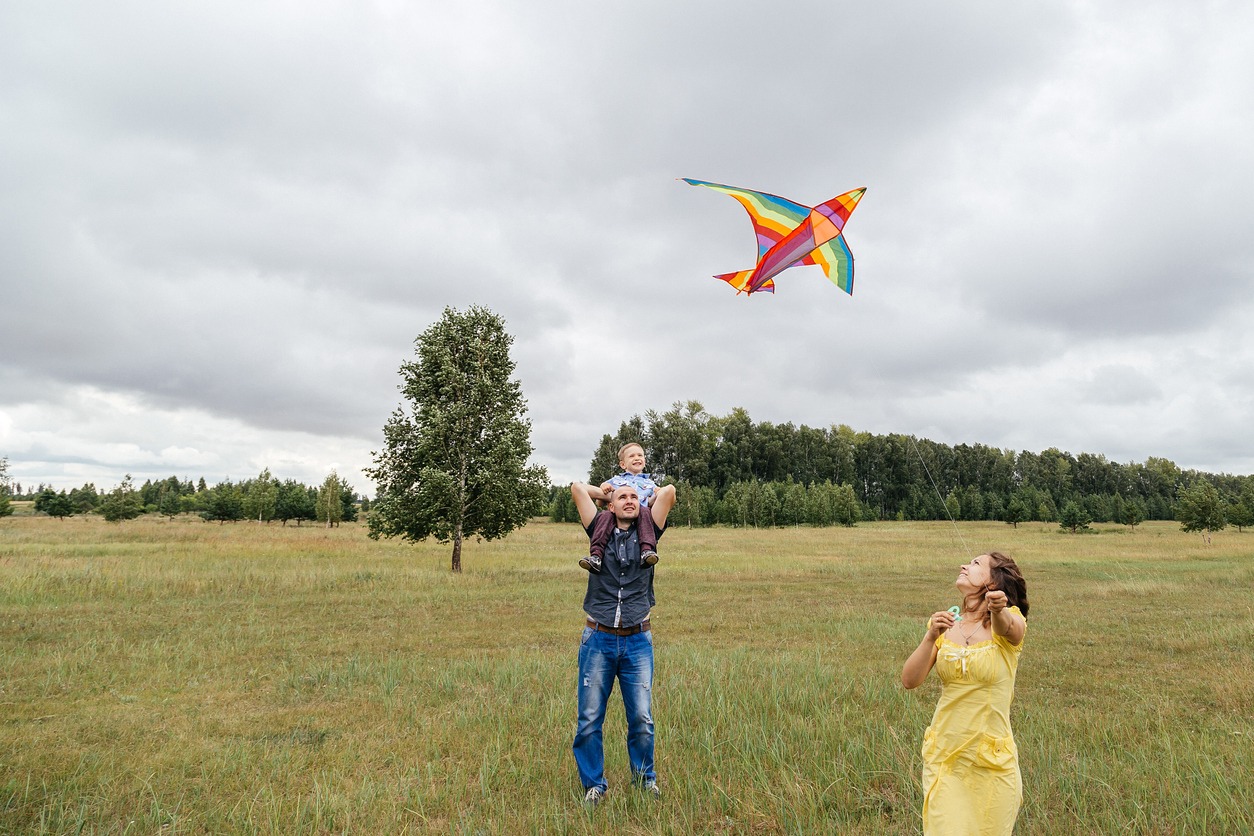Kite flying is a well-liked activity all across the world. At the end of a line, a kite is a gadget that soars through the air. It might be plain or elaborate, massive or tiny, light or heavy. Kites are used in various settings, including competitive sports, military and scientific missions, and as peaceful leisure or pastime. Kites are called after the beautiful hawk that lives in the sky.
The same concept that keeps an airplane in the air maintains a kite in the air. By speeding through the air, an aircraft generates its wind. Running with a kite in an open place on a calm day has a similar effect. The kite rises due to air currents striking its face and forcing it back as they move parallel to the ground.
Kite Flying Details
Read More About This Hobby| Category: Outdoors, Physical | Time: 30-60 min | Skill: Some |
| Initial Cost: $$ (51-100) | Space: little | People: alone, small |
| Long-Term Cost: Low | Makes Money: No | Location: outdoor |
After World War II, kite flying has evolved significantly, and it has nothing in common with the depictions on vintage postcards depicting kite flying as a pastime for youngsters. This is not to say that kite fliers do not care about history and tradition. Modern materials have resulted in a surge in inventiveness and a widening of the practice’s scope.
Today’s kite is more than just a toy for kids. It is a multi-faceted artistic pursuit. There is the joy of making things, building them, flying them, and, of course, sharing them with other kite enthusiasts.
Kite Flying History

Compared to kites’ age, the first lighter-than-air balloon (1783) and the first powered aircraft (1903) are very recent in the history of flight. The specific date and origin of the kite are unknown, but it is believed that they were flown in China more than two thousand years ago. The exact date and head of the kite are unknown. According to folklore, the first kite was created when a Chinese farmer tied a string to his hat to protect it from blowing away in a heavy wind.
Around 200 B.C., the first written mention of kite flying was found. When the Han Dynasty’s Chinese General Han Hsin flew a kite above a city he was invading; he was trying to figure out how far his men would have to tunnel to get past the fortifications. Because of this distance, his soldiers approached the city’s interior, surprised their foes, and defeated them. Traders from China to Korea and Asia to India finally introduced kite flying. General Gim Yu-sin was tasked to crush an uprising in Korea during the Silla Dynasty about the year 600, and each area created its kite style and purpose for flying them. His men, on the other hand, refused to battle. They thought it was a bad omen when they saw a big shooting star descend from the sky. The General deployed a giant kite to carry a flaming ball into the skies to reclaim control. When the soldiers saw the star return to heaven, they united and subdued the insurgents. Buddhist monks brought kites to Japan in the 7th century. They were employed to keep evil spirits at bay and ensure a plentiful crop.
A Sport of Kite Flying

Kite flying is a long-standing tradition in East Asia. Kites from Asia may be pretty melodious. The sound of the kites’ wind whistles through the reeds or bamboo tubes is supposed to drive away evil spirits.
During the early days of the New Year, people in Korea fly kites. Kites are honored on the ninth day of the ninth month in China, known as Kites’ Day or the Festival of Climbing Heights. Kites from China and Japan are colorful and intricately adorned. Birds, insects, butterflies, and other geometric shapes may be found on them. The dragon, a ferocious-looking head kite with several smaller flat body kites strung behind on parallel tie lines, is a popular Chinese fancy kite.
Thailand, where the air is filled with a wide range of kites in the spring, is a favorite place to fly kites. For example, in this country, kiteboarding is a significant league sport. All-Thailand championships are held every spring in Bangkok. Both competing teams aim to bring the opposing team’s kite down to Earth in the Thai kite fighting style. It is one team that flies the diamond-shaped paper and another group that flies the star-shaped Chula. Smaller pakpaos generally outperform larger chulas because of their better speed and mobility.
How to Get Started?

At any age, kite flying is a lot of fun. For some seasons, it is the ideal pastime. It is a terrific activity for youngsters since it is so much fun, it can be done anywhere, and you can enjoy the fresh and cold air while doing it. Sprinting and flying a kite in the air gives the majority of the children a lot of energy. It just flies in the air like a dream. It is a natural way to exercise. In the sense that you have a lot of fun throughout the gorgeous season, kite flying makes you more active.
For beginners, check out a guide to kite flying. It may seem appealing, but what makes it much more fun is when you do it in a group with little competition.
Consider upgrading to more sophisticated kites as your kite flying abilities develop. Understanding the ropes of a stunt or sport kite, for example, can help you transition from kite flyer to kite pilot. These kites allow you to do tricks and, with practice, fully control the kite in the air.
Tips and Tricks in Kite Flying

- Choose the right kite
The first thing you need to do to get started with kite flying is to get a kite! There are more kites’ kinds, colors, and sizes than ever before — remember, kites are now easier to put together, get into the air, and fly. For a small amount of money (around $20), you may get a basic-shaped kite (diamond, triangle, or prism) that is simple to build and manage. Although elaborate 3-D box kites and dragon kites are attractive, novices should stick to the traditional designs. You may go to more imaginative designs and forms once you’ve mastered the fundamentals of kite flying.
- Look for a large, open area
The next step is to choose the ideal place for kite flying. The best location is a beach or a large open field. Look at your neighborhood’s parks, ball fields, and farms. The more space you have, the more fun kite flying with kids will be. Avoid slopes if you want to fly your kite since the wind will make it harder. Keep an eye on your surroundings and stay away from electrical wires and trees.
- What is the best way to launch a kite?
Getting the kite into the air is the most challenging component of kite flying. Running to launch a kite is a favorite pastime of young children. While this is entertaining for children, it is not ideal to launch a kite. You may indeed allow them to try! If you want to establish this manner, make sure your youngster is racing against the wind with only a small line attached. When the wind catches it, they’ll have to come to a halt and release an additional line.
- How do you take your kite down?
Bring the kite in when you’ve finished flying it; wind the kite line around the spool or handle while walking towards it. Remind your youngster to coil the thread gently and carefully to avoid tangles and knots. It’s that simple!
- Come up with Challenges!
Several methods make kite flying more entertaining if you enjoy a good challenge. Test your ability to get the kite into the air fast or to cause it to plunge and fly. When it’s time to depart, try not to let the kite contact the ground when you bring it in. To keep it flying, you’ll have to draw it in swiftly.
Benefits of Kite Flying

Flying on a kite is a terrific way to relax, have a good time, and have several health advantages.
- Our eyes might become tired and unfocused due to our regular mobile phones and computer screens. Eye strain induced by ever-present electronics can be relieved by focusing on a distant item against a relaxing blue sky.
- Flying a kite helps us extend our neck and shoulder muscles, but sitting at a computer does not encourage healthy posture.
- Flying on a kite is a great way to relieve stress. When one watches a kite fly over a clear blue sky, one’s attention is drawn to the moment rather than the worries of everyday life.
- Connect with Nature Being outside allows you to enjoy the natural beauty of the sky and the surrounding landscapes, which are often overlooked.
- Breathing in the fresh air can help re-energize and re-energize your lungs.
Conclusion

This is a delightful pastime that also stimulates your mind and body. It brings joy and happiness into people’s lives. One can see colorful, neatly woven kites of different forms and colors in the sky. Witnessing the same is a joyful experience. The tree is also adorned with kites that have fallen from the sky. It is a celebration that adds a sense of joy and excitement to people’s usually humdrum lives.
It is also a lot of fun to fly a kite together, especially if you are competing to see who can fly higher until the other’s kite is cut off. It even appears to be fantastic. Become a popular hobby and a competitive sport. It has made life more fascinating for both youngsters and adults. It is a lot of fun as a pastime. You must become more engrossed in the overall kite-flying process. Concentrate on the beautiful and pristine blue sky.
